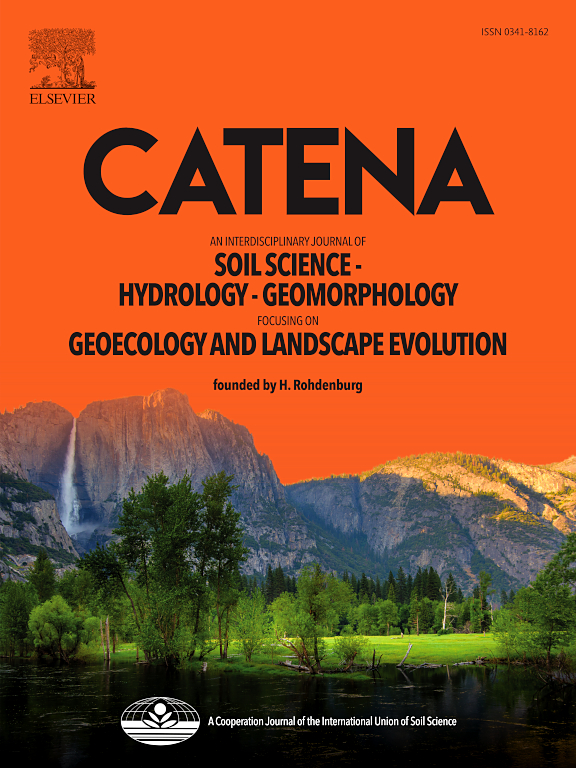Relief, soil and tree community attributes jointly shape liana community structure and diversity in a Neotropical rainforest landscape
IF 5.4
1区 农林科学
Q1 GEOSCIENCES, MULTIDISCIPLINARY
引用次数: 0
Abstract
Lianas are a fundamental component of tropical forests. Yet, their complex environmental interactions challenge our understanding of the variability in liana community attributes, which requires the integration of multiple environmental factors. We asked how relief, soil and tree community structure drive liana community assembly in a tropical rainforest of eastern Mexico. Using a geopedological approach, we established fifteen 0.5-ha plots across a complex landscape to census all lianas with basal diameter ≥ 1 cm. Additionally, we estimated slope, elevation, soil physicochemical properties, and tree community structural attributes, and related these factors to liana community structure and diversity. A principal component analysis showed that the main gradients of environmental variation (explained variance, PC1 = 37.3 %, PC2 = 19.6 %, PC3 = 14.6 %) are related to slope steepness, elevation, clay fraction, tree basal area, and the proportion of pioneer trees. By using these axes as explanatory variables in generalized linear models (GLMs), we found a significant relationship with liana abundance in the community, liana diameters and diversity. Moreover, the response of liana abundance to environmental heterogeneity varied among species. To advance our understanding of the mechanisms underlying liana community assembly in highly diverse forests, it is necessary to jointly assess the effects of multiple factors involved in liana performance and to account for the differential responses of liana species to environmental heterogeneity.
地形、土壤和树木群落属性共同塑造了新热带雨林藤本植物群落结构和多样性
藤本植物是热带森林的基本组成部分。然而,它们之间复杂的环境相互作用挑战了我们对藤本植物群落属性变异性的理解,这需要多种环境因素的整合。我们询问地形、土壤和树木群落结构如何推动墨西哥东部热带雨林藤本植物群落的聚集。利用地质方法,我们在一个复杂的景观中建立了15个0.5 ha的样地,对所有基部直径≥1 cm的藤本植物进行了普查。此外,我们还估算了坡度、高程、土壤理化性质和树木群落结构属性,并将这些因素与藤本植物群落结构和多样性联系起来。主成分分析表明,环境变异的主要梯度(解释方差PC1 = 37.3%, PC2 = 19.6%, PC3 = 14.6%)与坡度、高程、粘土含量、树基面积和先锋树比例有关。利用这些轴作为广义线性模型(GLMs)的解释变量,我们发现群落中藤本植物的丰度、藤本植物直径和多样性之间存在显著的关系。此外,藤本植物丰度对环境异质性的响应也因种而异。为了进一步了解高多样性森林中藤本植物群落聚集的机制,有必要联合评估影响藤本植物表现的多种因素,并解释藤本植物物种对环境异质性的差异反应。
本文章由计算机程序翻译,如有差异,请以英文原文为准。
求助全文
约1分钟内获得全文
求助全文
来源期刊

Catena
环境科学-地球科学综合
CiteScore
10.50
自引率
9.70%
发文量
816
审稿时长
54 days
期刊介绍:
Catena publishes papers describing original field and laboratory investigations and reviews on geoecology and landscape evolution with emphasis on interdisciplinary aspects of soil science, hydrology and geomorphology. It aims to disseminate new knowledge and foster better understanding of the physical environment, of evolutionary sequences that have resulted in past and current landscapes, and of the natural processes that are likely to determine the fate of our terrestrial environment.
Papers within any one of the above topics are welcome provided they are of sufficiently wide interest and relevance.
 求助内容:
求助内容: 应助结果提醒方式:
应助结果提醒方式:


